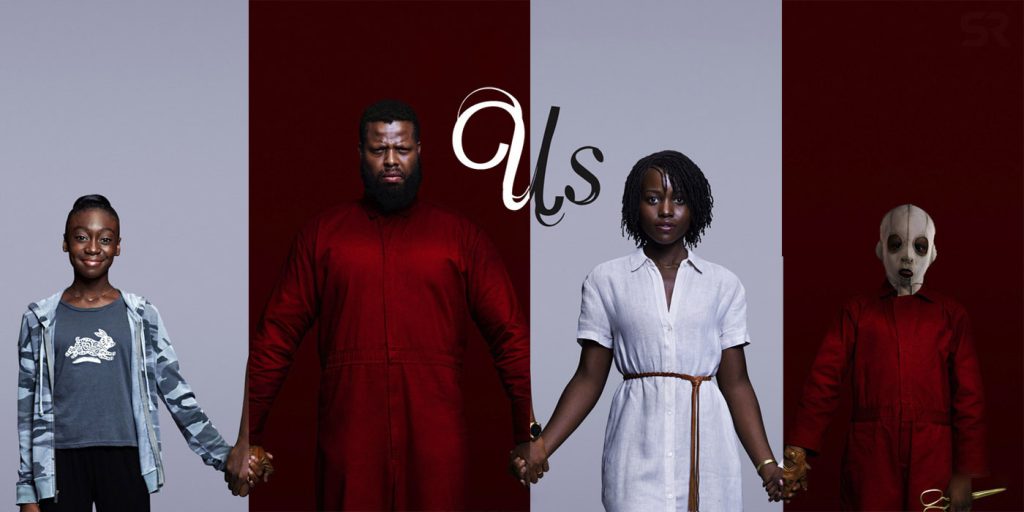by Reece Johnston
Overtime, films have used the technique of placing one actor into a variety of characters within the same story. Actors playing numerous characters in one film can serve numerous purposes such as, comedic effect, familial relation, and even a dreamy effect like doppelgängers. While using these methods may benefit a story, it does pose a challenge for the actors when playing different roles. This also adds the requirement for more editing, and even with older films, time for changing costumes, makeup, etc. When done correctly, these techniques used in films can create great affects for the films story.
1. Back to the Future Part II, by Robert Zemeckis

With this first film “Back to the Future Part II,” an example of this technique is through Michael J Fox. The film follows Marty McFly in the future where Marty and Doc try to prevent his son from being put in jail. He plays the well known Marty McFly in all three of these films, but he is also seen dressed as Marty McFly Jr. and Marlene McFly, Marty’s son and daughter. I am biased to these films, and the first time I watched this one I was younger and had not noticed they were all the same actor. The use of Fox allowed for a clever sense of humor as these films chose a close resemblance between characters in these different timelines. With the film having more limited effects compared to more modern ones, it impresses me that they could create characters by simply changing makeup and costumes on an actor.
2. Austin Powers: International Man of Mystery, by Jay Roach

In the film “Austin Powers,” Mike Myers plays two roles, while in each film following he adds another to his plate. The film consists of Austin Powers, a British super-spy that is trying to stop the plans of a villain, Dr. Evil, pretty cliché right? That is the point as these films were created as a parody of the “James Bond” franchise. Mike Myers portrays the roles of the main character Austin Powers, and his dramatic counterpart Dr. Evil. The use of Mike Myers, like “Back to the Future II,” was purely for comedic effect and allowed Mike Myers to expand his use for acting in more than one role. The interactions between Myers’ two characters create great encounters between these two ridiculous characters. Once again, this film does not fail to impress with it’s use of costume changing and shot selection.
3. Us, by Jordan Peele

Last but not least, we have a more modern film “Us,” which disconnects from the comedic trend, and into the realm of horror films. This film follows a family on vacation who have a run in with their doppelgängers at night. Come to find out that it was happening everywhere, and not just to their family specifically. This film by Peele stays clever as the audience remains unaware of the killers intentions until towards the end of the film. Every character within this film has a doppelgänger, therefore it is interesting to see the counterparts of each character as they attempt to kill, let’s say, the “normal ones”. Like the other films, the use of camera work, outfit changing, allow for an interesting effect for the big screen.
How do films manage to accomplish these effects?
When filming these shots where the actor is playing two characters in the same scene they have to use two different shots. So let’s say the one character is on the left and the other is on the right, they will film both scenes individually for each character, then edit them together. This allows for the actor to play both roles in the same scene. If they even have a shot where they are focused on one character and the other’s back is faced towards the camera, they can simply place a stunt double in for the one with their back showing.
Reece Johnston is a sophomore at Indiana University studying Cinematic Arts with an interest in directing. His favorite genre of film is horror, with a heavier focus on phycological and slashers.
1 Comment
If we travel back in time a bit more. Some other double roles:
Peter Sellers in Dr. Strangelove (1964) — three roles.
Alec Guinness in The Scapegoat (1959).
Eleanor Parker in The Woman in White (1948).
Bette Davis in A Stolen Life (1946).
And perhaps the most remarkable of all: Kim Novak in Vertigo (1958).
I haven’t looked these up a list of any sort — I just like movies.